Five Mountain Escapes for a Magical November
Discover five mountain destinations where crisp...
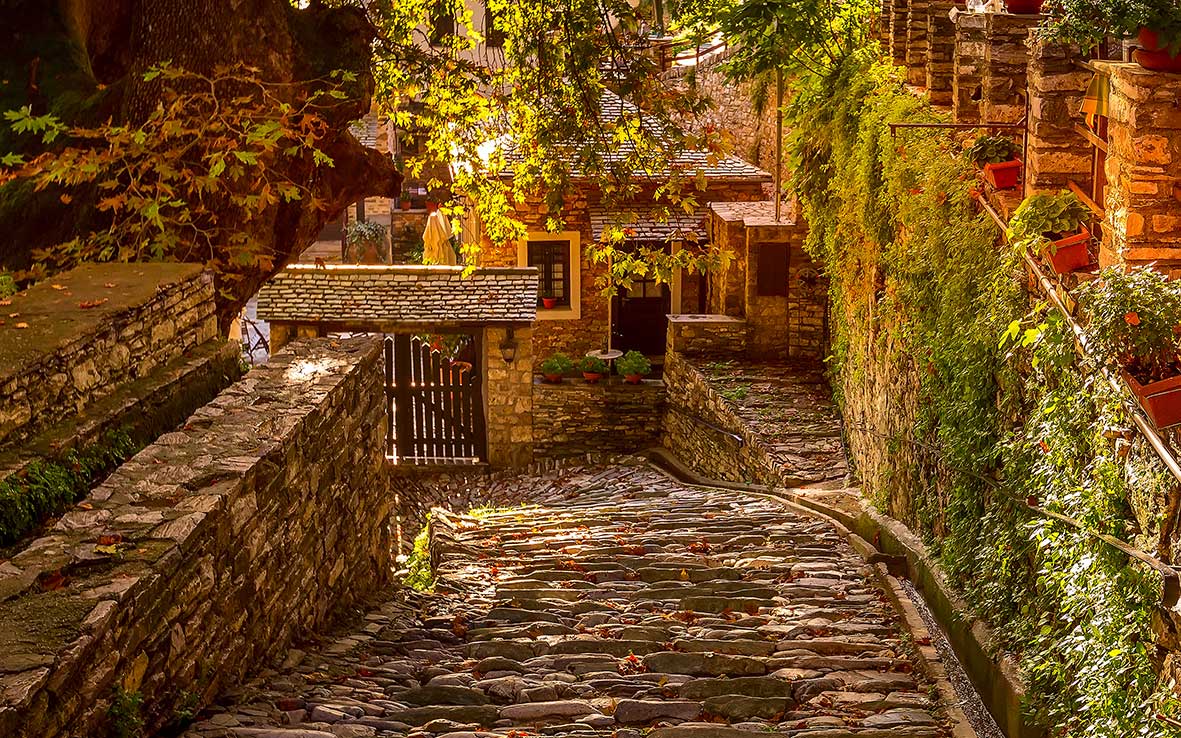
Makrinitsa, Pilio.
© Shutterstock
They look like children’s book illustrations; scatterings of small stone houses with tile roofs and flowering gardens, clinging to steep hills in the forest. Others dazzle in bright colors by the water’s edge – their doorsteps right on the quay. Some of Greece’s most picturesque villages will make you feel like you’ve stepped into a very well-curated theme park, portraying the worlds of your favorite fairy tales and dreams.
Here are a few of the villages we always return to whenever reality in the city gets too grim.
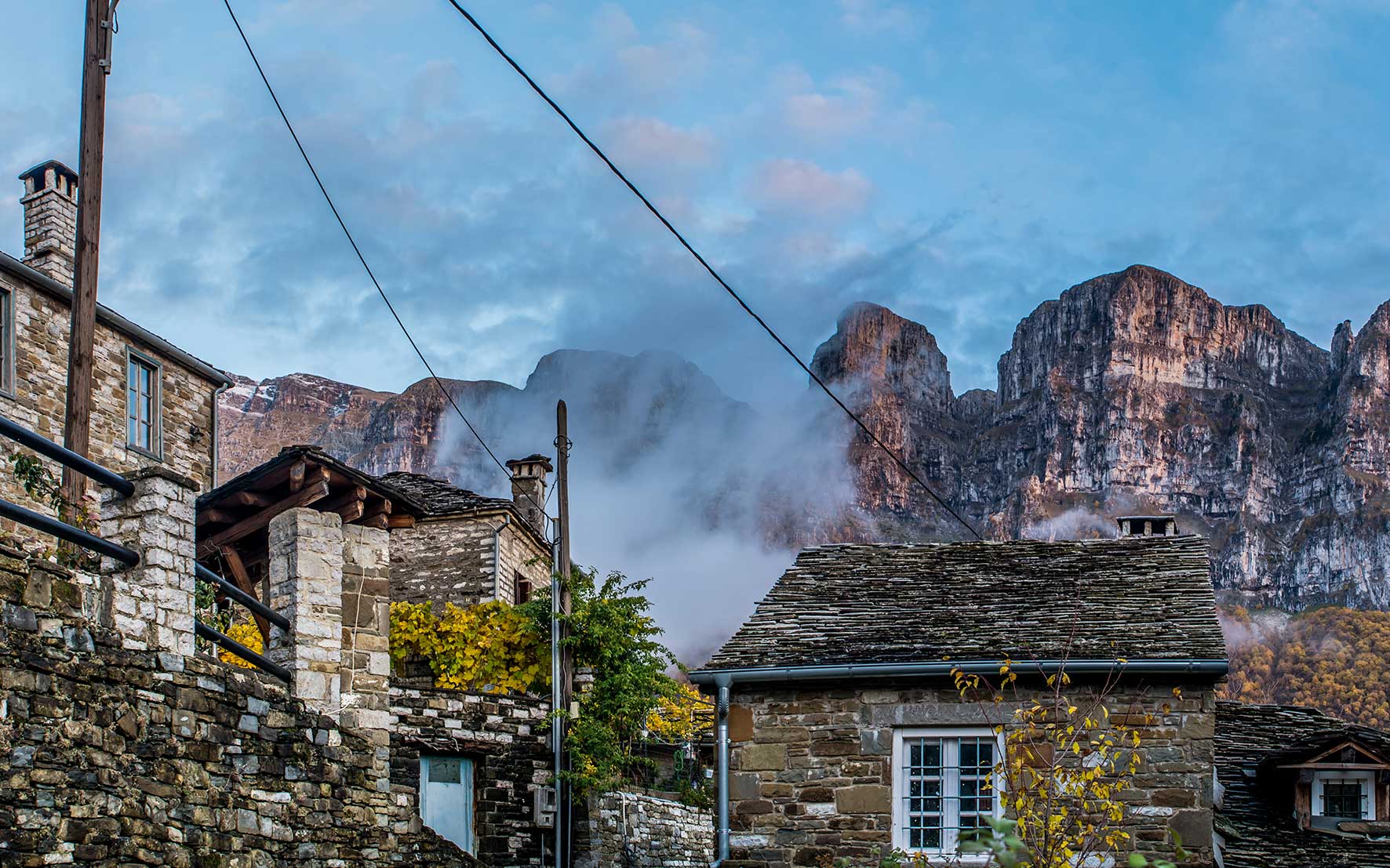
Megalo Papigo
© Shutterstock
Two of the most famous stone-built villages in Epirus are Megalo Papigo and Mikro Papigo (big and small Papigo). Located an altitude of 950 and 1,050 meters above the sea respectively, they combine incredible landscapes with high-quality stays at top hotels and guesthouses, built from stone and with slate roofs, in the traditional style of Epirus. On visits here, we enjoy spectacular views of the rocky Astraka Towers and the Vikos Gorge, Zagori’s excellent local cuisine and products, spa experiences and, above all, the warm hospitality of the locals, who are deeply connected to the land.
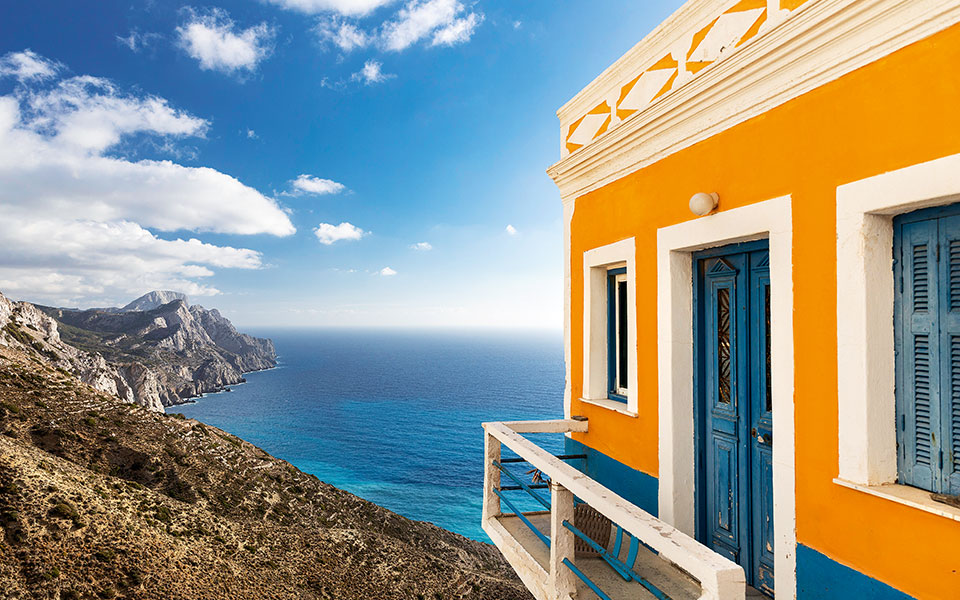
A balcony with a stunning view in Olympos.
© Nicholas Mastoras
The traditional village of Olympos, on Karpathos, is special in many ways. Many travel here to experience the serenity of what seems to be a place where time has stood still; wandering around the village, you might see women working their looms, artists painting ceramic plates, or a cobbler at work on a pair of boots. But besides that, Olympos is also about as picturesque as villages come. The view of it from afar reminds us of legos on a hill, and the view from the balconies of the houses is unbeatable.
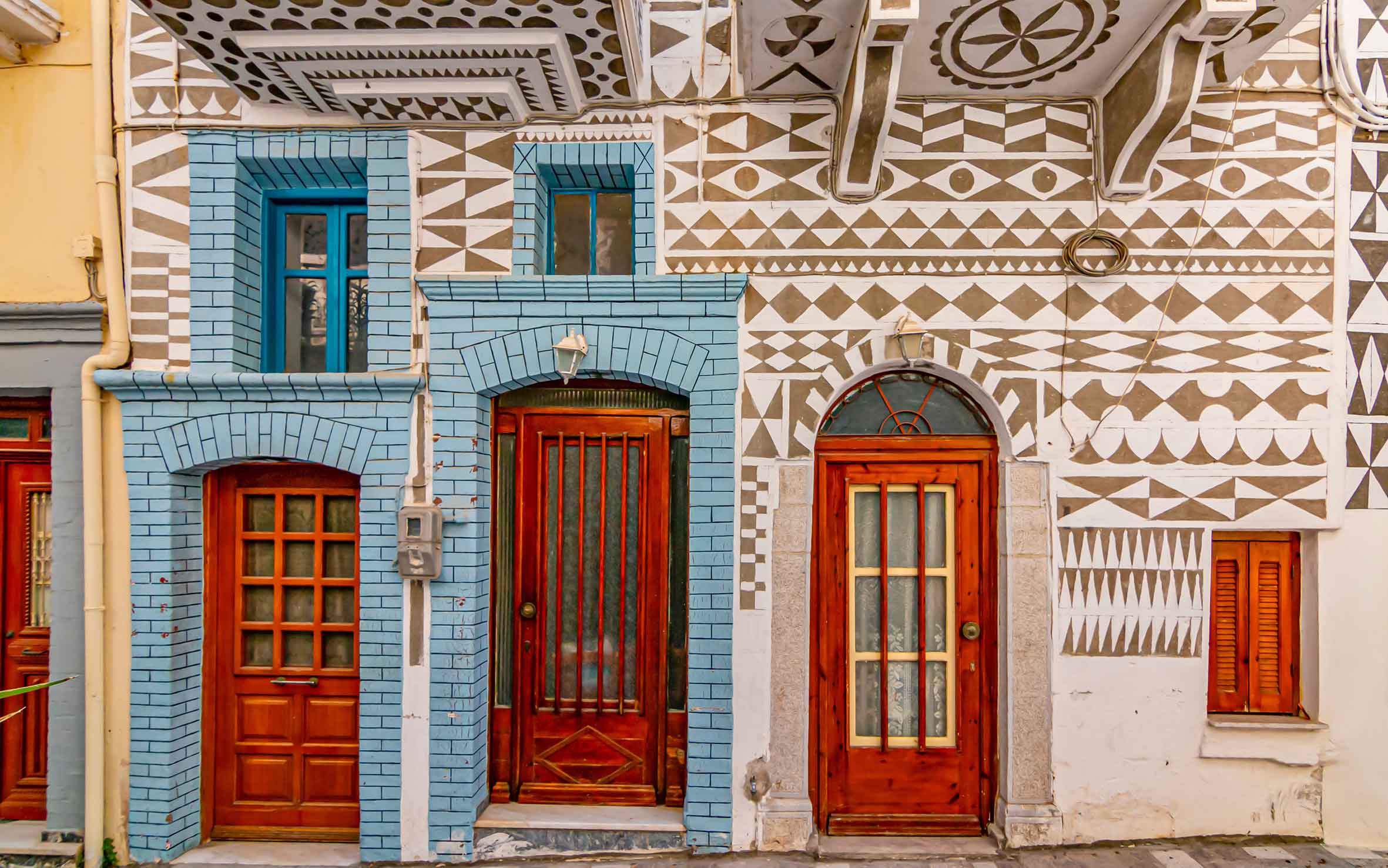
Pyrgi, Chios
© Shutterstock
On the island of Chios, there’s a group of traditional villages known worldwide as the “mastichohoria” (mastic villages), named for the mastic industry that long underpinned their economies. The most stunning of these villages is Pyrgi, famous for the black-and-white geometrical patterns on the village houses – “etchings” formed using the black sand from Mavra Volia and drawn with a fork on a thin undercoat of lime.
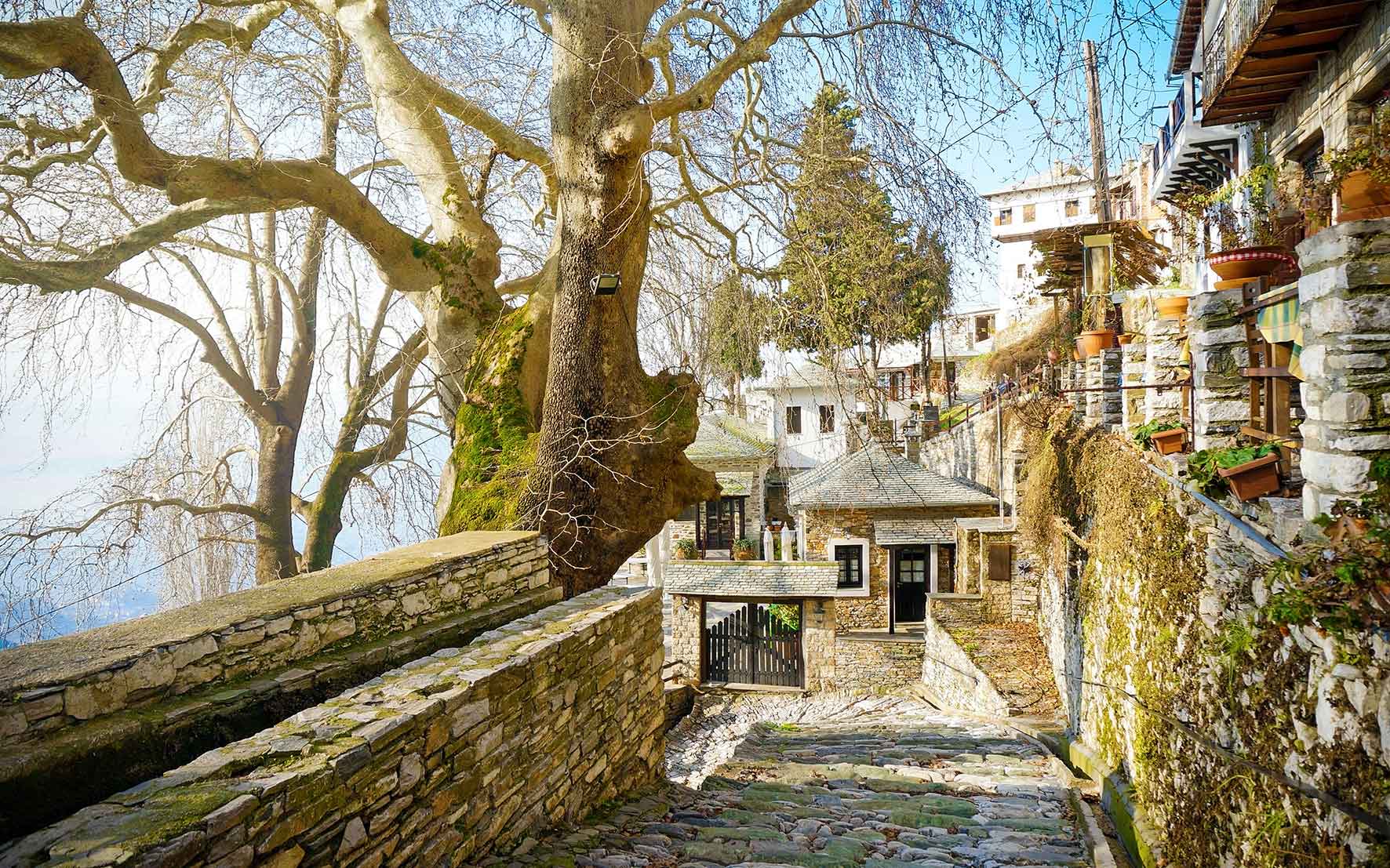
Makrinitsa, Pilio
© Shutterstock
Justifiably described as “the balcony of Pilio,” the views of Volos and the Pagasetic Gulf from Makrinitsa are unique, but your eyes are more likely to wander to the pretty stone buildings and the unusual rough stone paving on the streets, which is difficult to walk on (don’t wear heels here), but practical when it snows in the winter, and very pretty. In the square under the plane trees there is a marble fountain with four bronze lion heads; legend has it that its water confers immortality.
Here, you will also find the renowned traditional coffeehouse Theophilos, which is named after the painter Theophilos Hatzimihail, who in 1910 created the mural inside titled “The Battle in Krya Vrysi.”
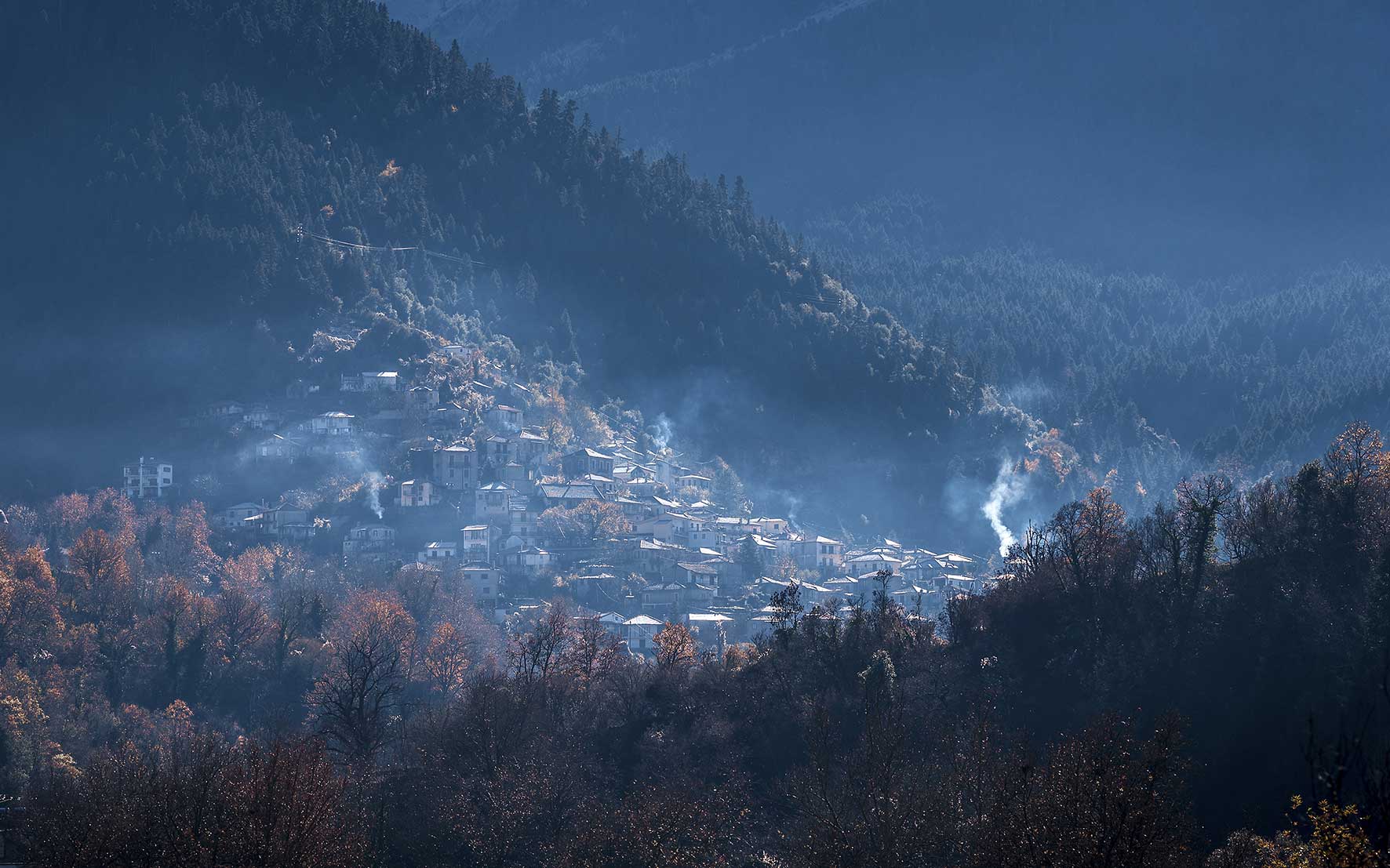
Megalo Horio
On the hills above the town of Karpenissi, you’ll find the traditional settlements Megalo Horio (literally “big village’) and the old and new Mikro Horio (“small village”). The former is the most touristy, featuring cafés and pastry shops lining the main road as well as shops selling local products, catering mainly to the coach loads of visitors to the Monastery of Prousiotissa.
On the opposite hillside is the Palio Mikro Chorio (“old small village”), which was cut in two by a landslide in January of 1963, and retains architectural elements that make it much more interesting than Neo Mikro Chorio (“new small village”), which was built further down by the survivors who had lost their homes.
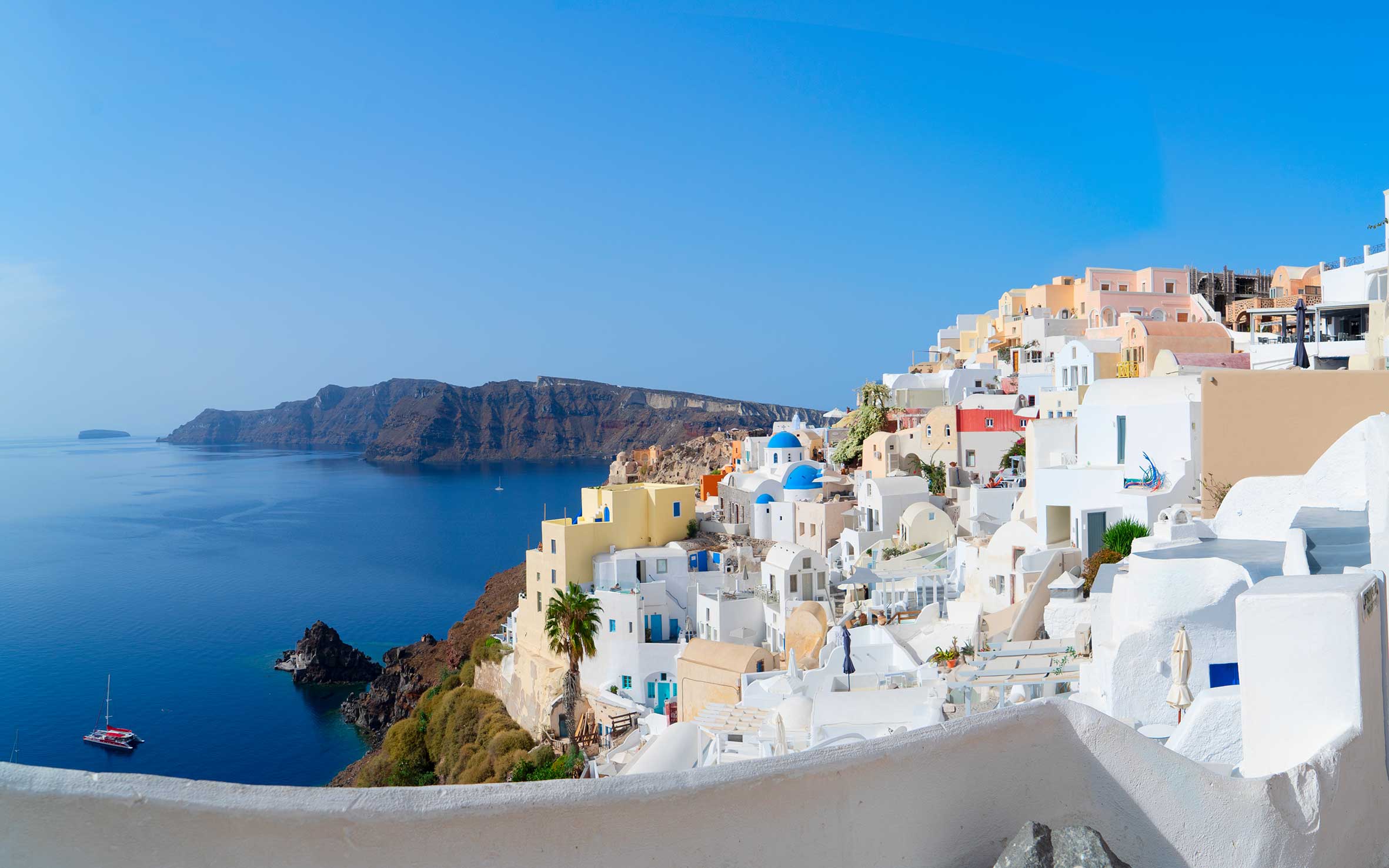
Oia, Santorini
© Shutterstock
The most famous village in Greece has an otherworldly charm that cannot be beaten. The Cycladic architecture is most commonly likened to sugarcubes, but here, the rounded corners and arches, and white in combination with soft pastels, marshmallows is a better simile. Most recommend visiting in the low-season, to avoid the crowds of tourists arriving every day on cruise ships and flocking to take photos of the sunset from the best vantage points.
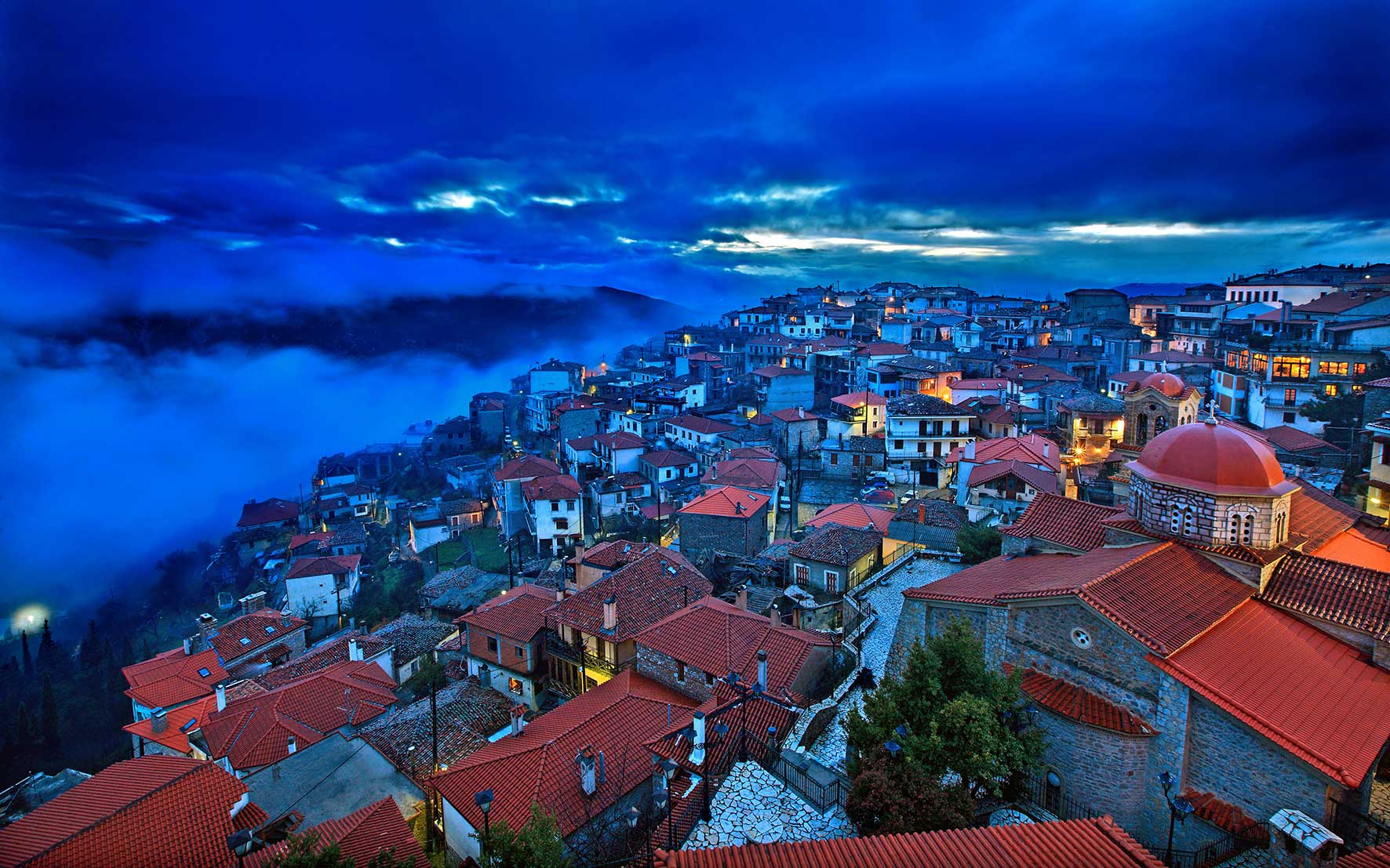
Arachova
© Shutterstock
Nestled on Mount Parnassos, Arachova is a town that has been transformed into a popular destination for winter sports lovers, but this is more than a skier’s retreat. Sitting at an altitude of 973 meters, the stone-built houses are often veiled in passing clouds, as if you were actually in heaven. Thanks to its proximity to Athens, we always head here at least once in winter months, even though the weekends see it buzzing with city slickers escaping the rat race for a break in the refreshing mountain air.
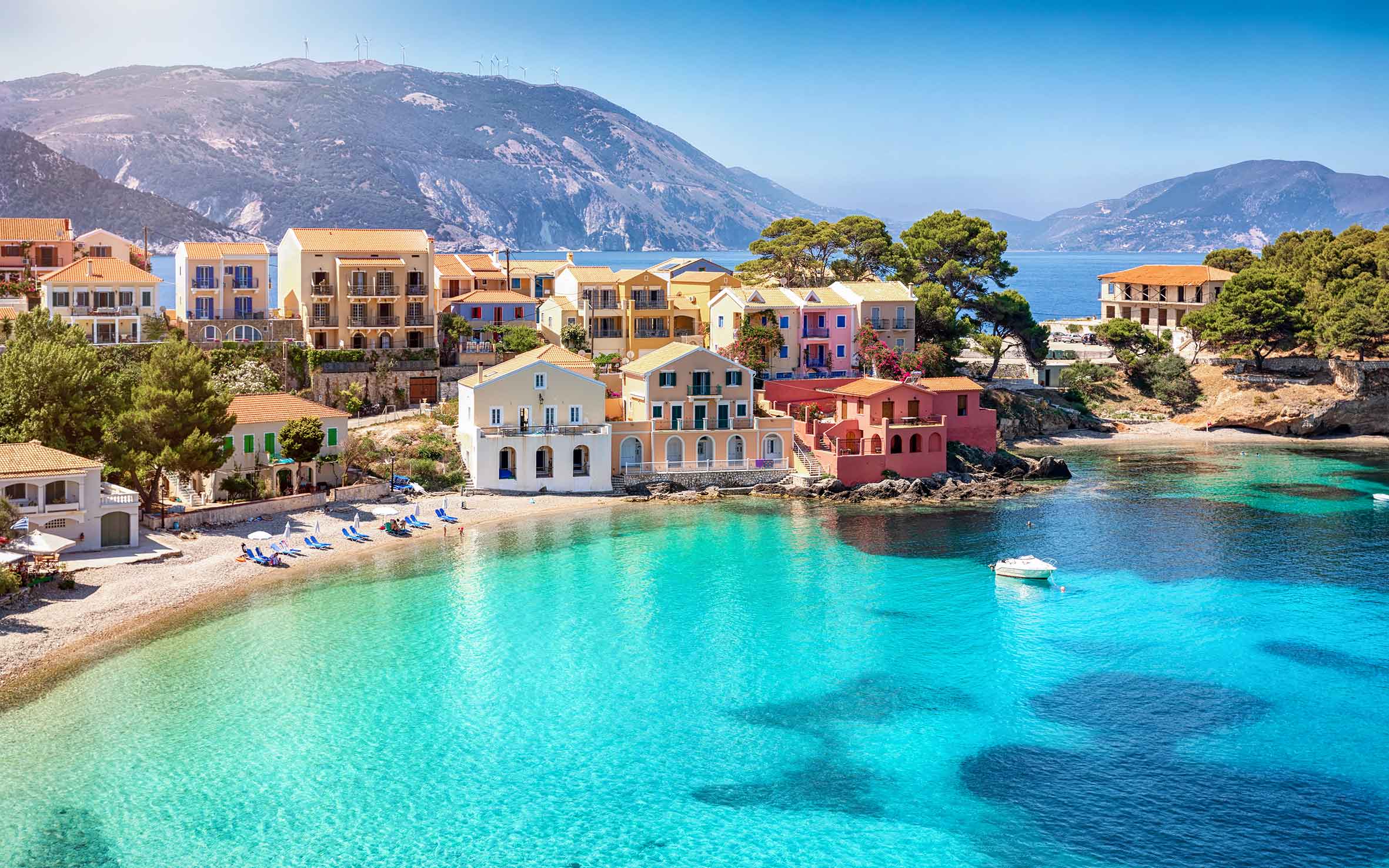
Assos, Kefalonia
© Shutterstock
On the Assos peninsula on Kefalonia, you’ll find a village of the same name, resembling the villages of the Amalfi Coast. It has an impressive Venetian castle which is home to a large variety of cicadas that produce an exceptionally loud sound. With its handful of colorful houses with flower-filled gardens and whitewashed courtyards, a handful of tavernas, no large hotels, and no bars, Assos is like something out of a romance novel, a simple place where time flows quietly and smoothly.
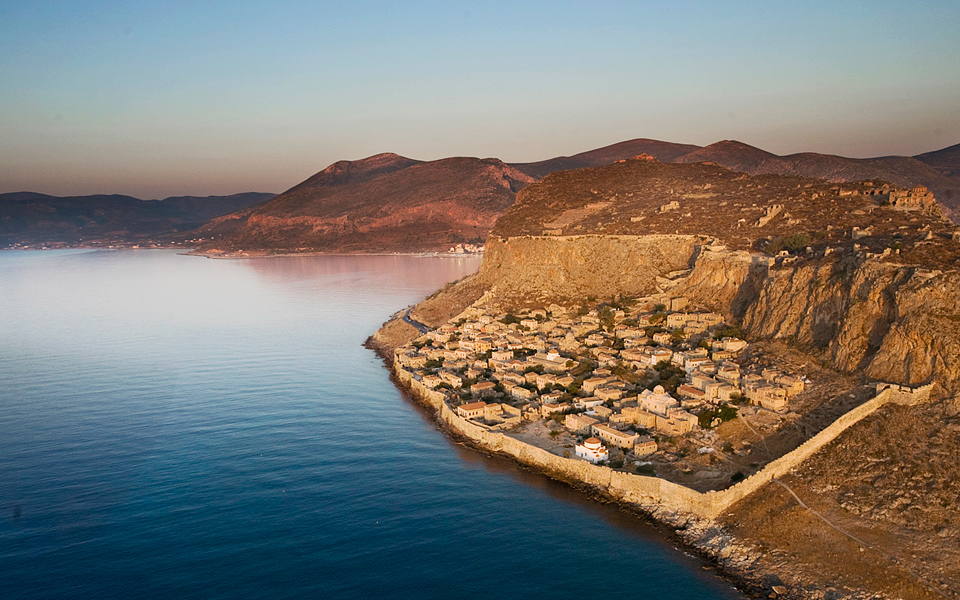
The sense of isolation felt on the legendary rock of Menomvasia, cut off from the coast of the Peloponnese by an earthquake in 375 AD, adds to the wonder
© Perikles Merakos
While it’s popularity in recent years could very well have destroyed its atmosphere, in fact, the uniqueness and fairytale vibe of the islet of Monemvasia, remain as true as ever. Even if you haven’t studied its history, you see it written on the walls around you. The sense of isolation felt on this legendary rock, cut off from the coast of the Peloponnese by an earthquake in 375 AD, adds to the wonder.
As a natural fortress, it was inhabited and soon became a strategic fortress claimed the Byzantines, Franks, Venetians and Ottomans. Neither museum-like nor artificially fabricated, Monemvasia is Europe’s only castle that has never ceased being inhabited, and 15 people are still permanent residents behind its limestone walls.
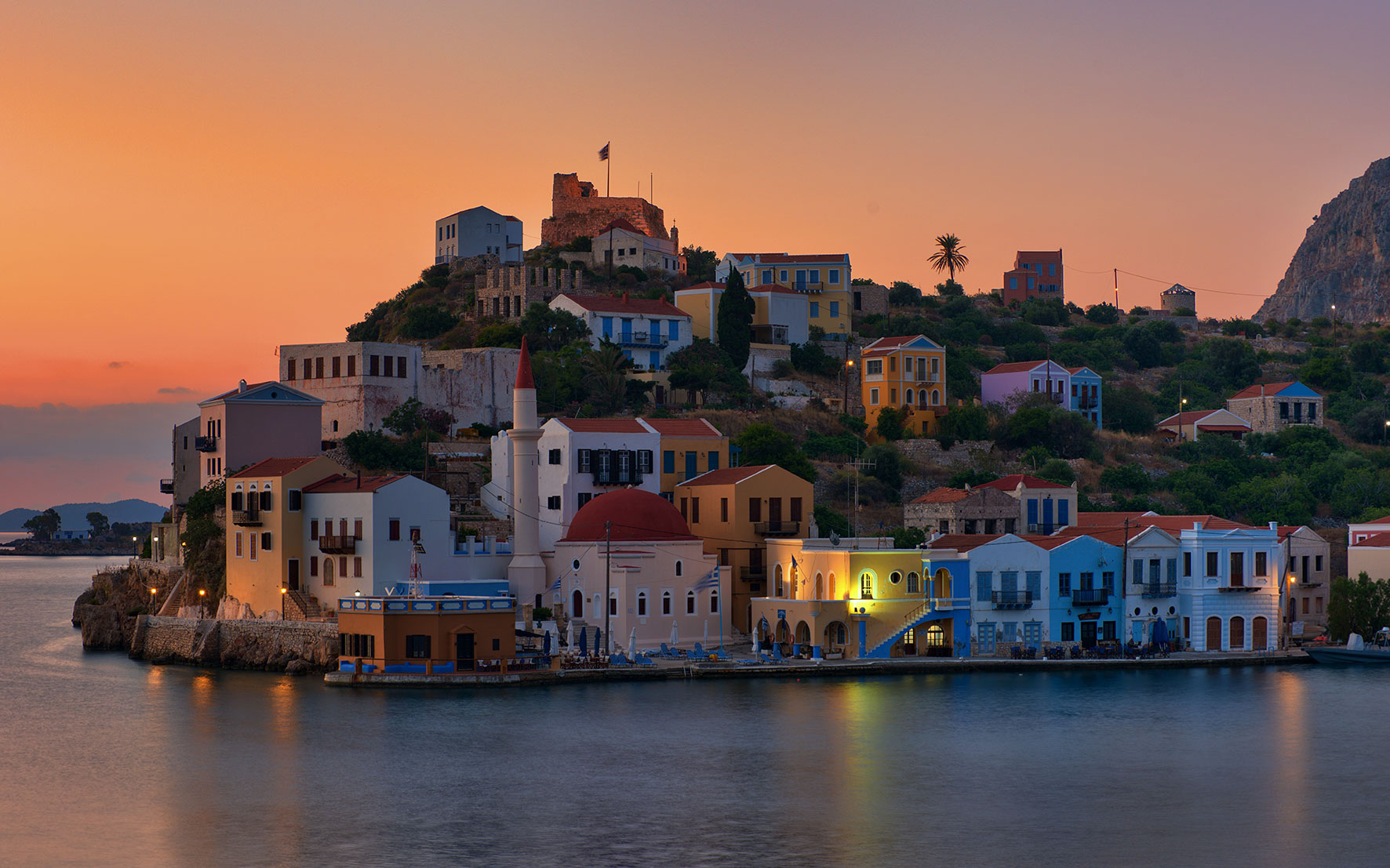
Kastellorizo
© Shutterstock
The small, car-free town of Kastellorizo looks like a painting, with its harbor full of caiques, ringed by a densely packed row of beautiful neoclassical houses. The U-shaped quay consists of a narrow strip, also known as “to kordoni,” or “the shoelace,” that runs along the entire waterfront of the village, and it’s where most of its activity is concentrated. Shopping, entertainment, leisure – almost every aspect of life plays out at the water’s edge.
You can find our print issue of Greece Is dedicated to Kastellorizo here.
Discover five mountain destinations where crisp...
Just a short distance from Athens,...
With just 45 residents, Pityos is...
In the castle town of Monemvasia,...